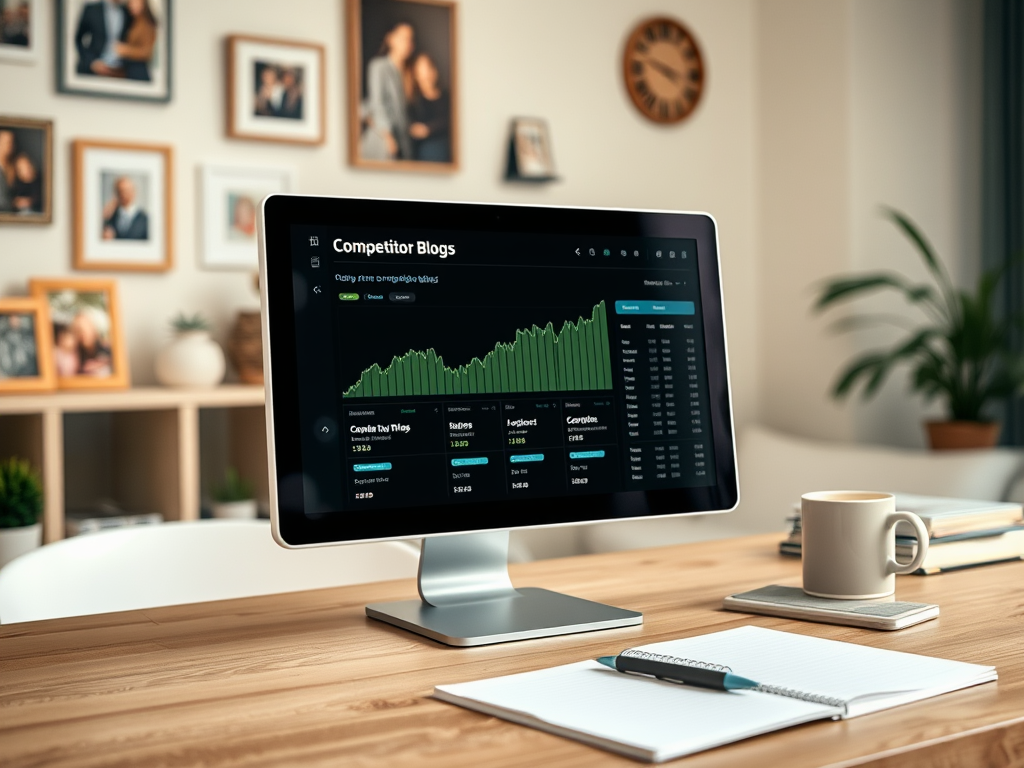In the fast-paced world of digital marketing, knowledge is your greatest asset. While creating compelling content is crucial for your brand, understanding your competitors’ blogging strategies can provide a treasure trove of insights. It goes beyond mere observation; it requires a structured approach that encompasses various metrics, tools, and data analysis. By diving deeply into what others in your field are doing, you can identify not just threats, but also opportunities that could place you ahead in the game. This article outlines a methodical process for analyzing competitor blogs in the digital marketing space, equipping you with actionable insights that can turbocharge your own blog’s performance.
This exploration will not only sharpen your competitive edge but also enhance your overall content strategy. Are you ready to unlock the secrets your competitors have kept hidden? Let’s embark on this journey of discovery and improvement!
Understanding the Importance of Competitor Analysis

Competitor analysis serves as a foundation upon which you can build a robust digital marketing strategy. Knowing your competitors’ moves allows you to construct a more informed and effective content calendar. The digital marketing landscape is dynamic and constantly changing, making it essential to keep tabs on your competitors. Are they innovating in ways you haven’t considered? Are they targeting specific keywords that you’ve overlooked? The answers to these questions lie in a diligent analysis of the blogs within your niche.
Moreover, analyzing competitor blogs helps to reveal industry trends that you may want to incorporate into your own content strategy. By understanding what resonates with their audience, you can tailor your content to meet the expectations and needs of your target market. Ultimately, this can result in higher engagement and better conversion rates. Competitor analysis is not merely a task; it’s an ongoing process that cultivates adaptability and foresight.
Identifying Your Main Competitors

The first step in your analysis journey is identifying who your main competitors are. It’s essential to distinguish between direct and indirect competitors, as both can offer valuable insights. Direct competitors are those who offer similar products or services, whereas indirect competitors fulfill the same customer needs but may do so through different means. Understanding the landscape of competition can guide your content topics, tone, and strategies.
- Direct Competitors: Provide similar services or products and target the same customer base.
- Indirect Competitors: Cater to a different niche but satisfy a similar need.
- Emerging Competitors: New entrants in the market that may impact your positioning in the future.
Tools and Resources for Blog Analysis
To get the most out of your competitor analysis, utilizing effective tools and resources is key. Several platforms can streamline the analysis process, saving you valuable time and ensuring comprehensive insights. Using these tools can help you discover trends, identify successful content, and gain a competitive edge. Here are some of the most recommended tools:
- SEMrush: Offers keyword analysis and traffic estimates.
- Ahrefs: Exceptional for backlink analysis and content research.
- BuzzSumo: Aids in discovering popular content topics and potential shareability.
- Google Analytics: Provides in-depth insights into referral traffic and user engagement.
Key Metrics to Analyze
As you delve deeper into your competitor’s blogs, focusing on key metrics is vital. These metrics will provide you with a clearer picture of how their blogs are performing compared to yours. Below are some key metrics you should consider:
| Metric | Description |
|---|---|
| Monthly Visitors | Number of unique visitors that visit the blog each month. |
| Traffic Sources | Breakdown of where their traffic originates—from search engines, social media, etc. |
| Engagement Metrics | Includes bounce rate, average time on page, and number of comments or shares. |
Understanding these metrics is critical to gauging the effectiveness of your competitor’s content, but it’s also essential to keep an eye on your own performance. You can utilize these insights to inform your strategy and experiment with different approaches in your blog.
Content Strategy Insight
Examining your competitors’ content offers a wealth of knowledge that can inform your own strategy. Analyzing various content formats can help you determine what resonates best with your shared audience. Do they tend to publish videos, infographics, or long-form articles? Understanding these formats can guide your own content plan, enabling you to adopt methods that yield better engagement.
- Types of Content: Review whether your competitors focus on blogs, infographics, podcasts, or videos.
- Post Frequency: Determine the consistency of their publishing schedule and how it affects audience engagement.
Furthermore, keyword analysis is crucial for understanding which keywords are driving traffic to your competitors’ blogs. Identifying top-ranking keywords alongside long-tail phrases that may have lower competition but are highly relevant can help refine your content strategy.
Social Media Presence
A competitor’s social media strategy often reflects their overall blogging effectiveness and audience interaction. By assessing which platforms they are active on, you can gauge where to focus your own social media efforts. Additionally, measuring the effectiveness of their content when shared on social media can offer insights into the type of content that encourages shares and engagement.
- Facebook: Assess how they utilize this platform for brand engagement.
- Twitter: Determine their approach for real-time interactions and updates.
- LinkedIn: Explore how they leverage this platform for B2B connections.
- Instagram: Analyze their visual content strategy and engagement tactics.
Conclusion
Analyzing competitor blogs in the digital marketing space is an invaluable practice that can equip you with the insights needed to refine your own blog strategy. By employing the right tools and focusing on key metrics, you can uncover opportunities, keep up with industry trends, and ultimately enhance your content’s performance. The knowledge gained from such analysis not only empowers you to adapt but also positions you to innovate.
Taking the time to understand your competition will not only improve your digital marketing efforts but will also position you better for future challenges. Embracing this ongoing process can ultimately lead to a more successful and sustainable blogging strategy.
Frequently Asked Questions
- What is competitor blog analysis? Competitor blog analysis involves examining and evaluating your competitors’ blogs to understand their strategies, strengths, and weaknesses.
- Why is it important? It helps identify gaps in your own content strategy and allows you to leverage best practices from successful competitors.
- Which tools should I use for analysis? SEMrush, Ahrefs, BuzzSumo, and Google Analytics are some of the recommended tools for effective competitor analysis.
- What metrics should I focus on? Key metrics include traffic analysis, engagement rates, content performance, and social media presence.
- How often should I analyze my competitors? Regular analysis, ideally on a quarterly basis, can help you keep up with changes in the competitive landscape.
